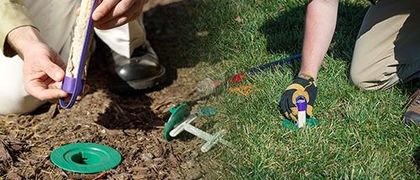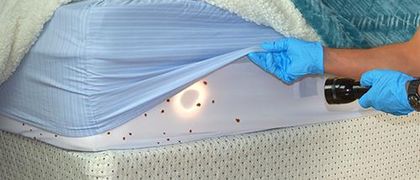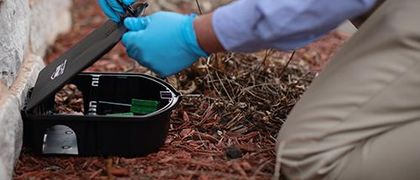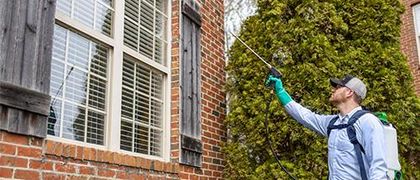How to Get Rid of Bed Bugs in Your Bathroom
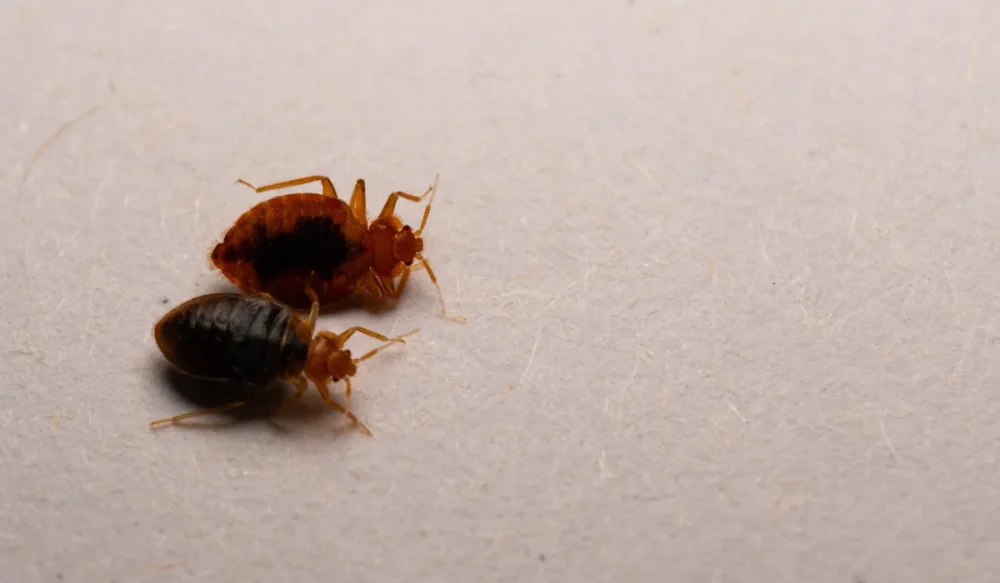
Bathrooms aren’t the first place most homeowners expect a bed bug infestation. But these critters are hitchhikers. They don’t care if it’s a hotel room, a bedroom, or the master bath. If they find a place to hide and feed on human blood, they’ll settle in.
And because bed bugs are masters at tucking themselves into crevices behind wallpaper or along baseboards, a bathroom can offer more hiding spots than you might think.
In this guide, you’ll learn how to get rid of them in your bathroom and how to know when it’s time to bring in a professional pest control company.
Key Takeaways
- A deep clean using hot water and vacuuming helps remove live bed bugs, eggs, and early signs of infestation.
- Fabric items must be washed on high heat and sealed in plastic bags to stop bed bugs from spreading further.
- Bed bugs may hide in tight gaps and survive DIY efforts even after high heat and targeted treatments are used.
- Ongoing signs of bed bugs or new bites after cleaning mean you should contact a professional pest control company.
Start With a Deep, Targeted Clean
Begin by vacuuming every inch of the space, focusing on tile seams, electrical outlets, and voids behind vanities.
Bed bugs often crawl into tight gaps in baseboards, under linoleum, or near plumbing. Follow up with hot water to scrub down surfaces and dislodge any bed bug eggs, exoskeletons, or droppings.
This first step helps remove both live bed bugs and signs of infestation, like reddish-brown smears or shed skins.
Remove Fabrics and Isolate Them Properly
Any bathroom items made of fabric, bathmats, towels, even cloth shower liners, should be immediately removed, sealed in plastic bags, and laundered on high heat. This kills nymphs and adult bed bugs.
Be sure to dry them thoroughly, as the high temperatures are what kill them and their eggs, not just the wash cycle itself.
Inspect Unusual Hiding Spots
Even in a bathroom, bed bugs will search for tiny hiding spots close to a food source.
That could include behind loose wallpaper, inside picture frames, or under the edge of your tub. Check around the bed frame and headboard if your bathroom is part of a bedroom suite.
These pests won’t always stick to mattresses or box springs. They’ll explore nearby rooms through plumbing gaps or wall voids.
Apply High Heat Strategically
Pest control companies often use professional heat treatments to kill bed bugs, but you can simulate small-scale versions. If your bathroom allows, you can use a portable heater to raise the room temperature above 120°F and hold it there for several hours.
While not as reliable as a professional pest control service, this can help reduce their numbers when combined with other methods.
Use Targeted Methods for Tight Spaces
If you’re going the DIY route, focus your treatments on cracks and crevices, especially where you see signs of bed bugs. Avoid spraying open surfaces like countertops.
Bed bug control products that are designed for tight areas can help, but be cautious around drains or water sources. Consider mattress encasements and furniture interceptors in nearby sleeping areas to cut off access to a blood meal.
Keep Monitoring After Treatment
Bed bugs don’t always go quietly. Use traps in discreet corners of the bathroom to monitor for new activity. These traps can help you catch adults or nymphs trying to move through the space.
Continued presence even after treatment could indicate that they've spread into neighboring rooms, or deeper into voids you can’t reach.
Know When Your Bathroom Strategy Isn’t Enough
If you’ve done everything right but the bugs keep coming back, that’s a sign you may need professional pest management.
You’re Still Getting Bed Bug Bites
If you’re waking up with itchy welts, especially around your ankles or arms, your infestation may not be isolated to the bathroom.
The presence of bed bug bites often means the bugs are using the bathroom as a hiding space, but feeding elsewhere, most likely from a nearby bedroom.
You Spot Live Bed Bugs After Cleaning
Seeing one or two critters during cleaning might be manageable. But if you keep spotting adults the size of an apple seed, especially after vacuuming and treating, that means they’re not just passing through.
It’s likely a larger infestation that’s taken hold in your home.
Signs Show Up in Other Parts of Your Home
These pests can travel far from their original hiding place. If you notice signs of bed bugs in other rooms, like near your bed frame, headboard, or even in your closet, then a pest control company is your best next step.
Cockroaches and fleas are also known to hide in similar areas, so an expert can help with correct identification.
You’ve Tried DIY Methods, but They’re Not Working
If you’ve washed everything, scrubbed every surface, and followed all the preventive measures, but the signs of infestation return, it’s time to call an exterminator.
They’ll know how to trace the life cycle, treat wall voids and crevices, and apply professional heat treatments to eliminate every stage, from egg to adult.
Ready to Be Bed Bug-Free? We Can Help
At Miller Pest & Termite, we’ve handled everything from fleas in baseboards to full-blown bed bug infestations in box springs and bathrooms.
Our team is trained to spot the presence of bed bugs in less obvious places, like wallpaper seams or behind electrical outlets. Whether you need help identifying the source or want expert help to kill them fast, we’re ready to help you reclaim your space.
Contact us now, and let us help you get your home bed bug-free for good.
Get Help Now!


